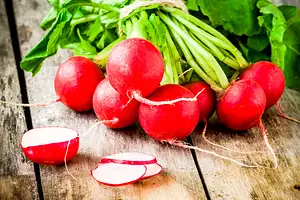Selecting the perfect turkey for your Thanksgiving celebration should be simple, right? The decision would be so much easier if every turkey available at the market were equally affordable, flavorful, and easy to prepare!
However, turkeys can vary based on: medications they have been given, additives they include, temperatures they have been preserved at, and how they have been processed, etc.
As you choose the type of turkey to serve on your Thanksgiving table, look for one best suited to: your budget, your taste, the needs of your guests, and how you will prepare it. Keep reading to learn about the different types of turkey that you can choose from at your local market.
1. Size: To figure out the amount of turkey you need to buy, start by counting how many people will attend your Thanksgiving festivities. Plan to serve 1-1.5 lbs of turkey per person. You could plan for a little less if a majority of your guests will be children.
2. Male or Female: Male turkeys are labelled “Toms” and generally weigh between 18 and 32 lbs. Female turkeys and labelled “Hens” and usually weigh between 8 and 16 lbs. Traditionally, Hens had a higher ratio of white to dark meat. However, the Toms available on the market now have caught up and also offer more white than dark meat.
3. Young: The USDA requires that a turkey labelled “young” be less than 8 months old when it is processed. Turkeys are fully grown at 4 months old. While young turkeys are often smaller and more expensive than “yearling” turkeys, they are more tender and flavorful.
4. Organic: A turkey labelled as organic is not of better quality or flavor than a non-organic turkey. Organic turkeys have not been genetically engineered or exposed to ionizing radiation during processing. Their feed has also been tested to meet USDA requirements for organic status. These turkeys tend to be higher priced and have limited availability.
5. Free Range: To receive free range status, the door of the turkey house must be left open for a few minutes each day so that the turkey can walk out in the yard. Many turkey farmers choose not to raise their turkeys free range because it exposes the turkeys to disease, stress, and other negative effects without improving quality or taste. Free Range turkeys tend to be pricey.
6. Natural: Natural turkeys have been minimally processed, without the addition of color or artificial ingredients. However, natural status does not mean that they are antibiotic free.
7. Heritage: Turkeys that are labelled heritage have been raised according to strict guidelines set by the American Livestock Breed Conservancy. They must spend their life outdoors (as opposed to in a cage), mate naturally, and have a normal growth rate. These turkeys are generally older when they are processed and tend to be of smaller weight. Heritage turkeys have a slightly gamey flavor. These turkeys are more expensive.
8. Kosher: Turkeys that are Kosher have been inspected and processed under the supervision of an approved rabbi. They are grain-fed, have not been caged, and are not given antibiotics. Kosher turkeys have been soaked in a salt brine, which yields a savory flavor and higher weight. These turkeys tend to be moderately priced.
9. Basted: Turkeys are basted or “enhanced” to improve their flavor and texture. They have been injected with a mixture of water and chemicals (often containing salt and fat) to increase their weight by about 15%. These turkeys are highly processed and tend to be inexpensive.
10. Fresh: The term fresh is rather deceptive when it comes to turkey. A fresh turkey has never been brought to a temperature below 26 degrees F. Many turkeys that are labelled as fresh were processed two months before they reached the refrigerator case at your local market. It is important to check the freshness dates of these turkeys.
11. Frozen: Turkeys that are sold frozen must have been brought to a temperature below 0 degrees F. They are often fresher than turkeys sold as “fresh” because they have been flash-frozen immediately after processing. Frozen turkeys are the most affordable and can be kept in the freezer for up to 1 year.
12. Whole vs. Parts: If you are having a small, intimate Thanksgiving meal buying a turkey breast can be your best option. They are available frozen or fresh, bone-in or deboned. If you would like to serve both dark and white meat, you could also pick up a package of turkey thighs. In general, you can use the same methods of preparation for cuts of turkey as you can for a whole turkey.
Sources: https://localfoods.about.com/od/poultryrecipes/a/What-Turkey-Should-I-Buy.htm
https://whatscookingamerica.net/Poultry/TurkeyTypes.htm
https://seekingalpha.com/article/20597-tips-on-buying-a-thanksgiving-turkey










Comments